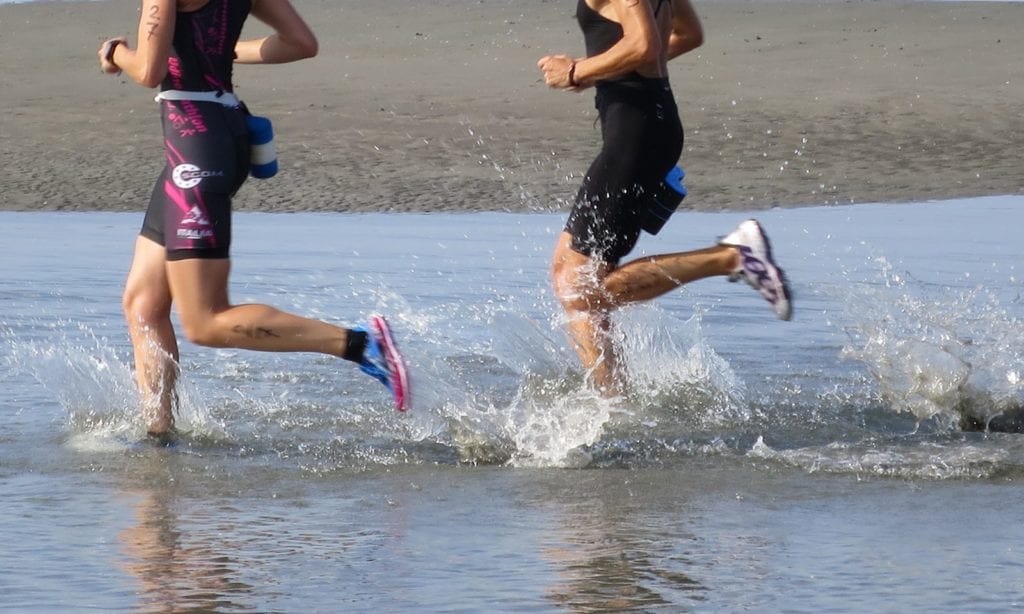What is Cross Country?

Introduction
Cross country running is when you tackle long distance runs over different types of terrain such as grassy landscapes, dirt, gravel or even muddy wet and slippery surfaces. It is very different from trail running which is shorter and limited to narrow trails, or track running where you are running on a smooth even surface. Xc running requires specialized cross country shoes (click here for the full guide).
What size Spikes do you need for Cross Country?
When running cross country spikes will come in handy and it is important to know what type of spike to get. The spikes on a cross-country shoe need to be more robust than those you would find on a track shoe, as they are designed to deal with a number of different objects such as rocks and more. Spikes on a cross-country shoe are always pyramid types spikes and these come in a number of different lengths.
You can change the length of your spike depending on the terrain you will be taking on during any given race. Pyramid spikes are so named for their shape and the lengths of the spike can range from 1/8 to 5/8 inches depending on the type of surface you will be running on, with the shortest of these spikes being used when you are going to be running track for training purposes. Below we outline the different lengths and what they are ideally suited for.
Quarter Inch Spike
This length of the spike is ideal when the course you will be taking on consists of firm and dry surfaces, even some pavement. They are great on gravel and dirt and are a very versatile spike that every cross country runner should have in their bag.
3/8-Inch Spike
This length of cross-country spike is ideally suited for grassy courses, with some dirt or gravel. These are the most common spikes in cross country and will be used for the majority of your races. They are designed to give you the best grip and comfort when racing on dry surfaces. You will not, however, be able to use these spikes if your race is going to include firmer surfaces such as a track, pavement or asphalt.
1/2-Inch Spike
These cross-country spikes are designed for when the weather turns bad. The more it rains and the wetter the surfaces you are traversing, the longer your spikes need to be to take on the mud and water and prevent you from slipping and falling, which can cause injury. These spikes, however, should never be used if you are going to be running on hard surfaces such as pavement or track as they will be very uncomfortable to run with. So even if you find the course a bit wet, if you are going to be having to cross firm terrain, rather go with the 3/8 inch spike than the half inch.
5/8-Inch Spike
 These are the spikes you will use when you are going to be running really muddy courses. They are designed for those people who often race in the rain and are perfect for that early winter or late autumn races where you are often faced with muddy and messy surfaces during your cross-country race. These are specialized spikes designed specifically for soft, muddy surfaces and will be incredibly uncomfortable to use if you are going to be running on harder or firmer ground.
These are the spikes you will use when you are going to be running really muddy courses. They are designed for those people who often race in the rain and are perfect for that early winter or late autumn races where you are often faced with muddy and messy surfaces during your cross-country race. These are specialized spikes designed specifically for soft, muddy surfaces and will be incredibly uncomfortable to use if you are going to be running on harder or firmer ground.
So as you can see there are a variety of different cross country spikes available and you need to be sure to select the one that will be best suited, not only to the running conditions as regards wet or dry weather but also underfoot conditions such as grassy or dirt surfaces, to wet and muddy or firm and dry, all of this will have an impact on which spike you will choose to use.
What Shoes to wear when Running Cross Country?
The shoes that you will wear during a cross-country race will differ greatly from a track and field racer or even a trail runner. Cross country shoes are designed to take on a variety of different types of surfaces, from pavement to grass, to very muddy and wet soft surfaces. This is why cross country shoes that come with spikes, have a variety of lengths to choose from depending on the type of terrain and the weather you will be facing during your cross-country race.
A supportive, grippy, comfortably cushioned shoe is what you are looking for. You can choose one with or without spikes when it comes to traction. They should also be breathable and durable and the soles should be abrasion resistant. Cross country can be lengthy runs over difficult terrain and have the best shoe to deal with these types of conditions is what will make the difference, not only in your winning or losing a cross-country race, but also your enjoyment of the sport as a whole.
What is the Difference Between Trail Running and Cross Country?
Trail running will usually involve shorter distances than cross country and also trail runners run on narrow trails that are rocky and often extremely steep. Trail running does not involve such long runs and wearing spikes when running trail is not advisable due to the number of rocks, roots and other debris you will be faced with most of your run.
Cross country, on the other hand, involves running on various different types of surfaces, including paving at times, and for a lot longer distances of up to 10K. Cross country runners often wear spiked shoes to cope with the wet, soft and muddy surfaces that they can be faced with.
Conclusion
Cross country is a sport where you need to be able to take on various different surfaces and races of varying lengths as well. It is a specialized sport that requires specialized shoes and knowing which shoe to wear when tackling a cross-country course will ultimately make the difference to you mastering your race or coming up short.